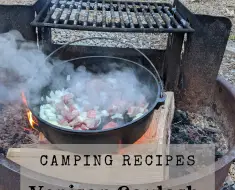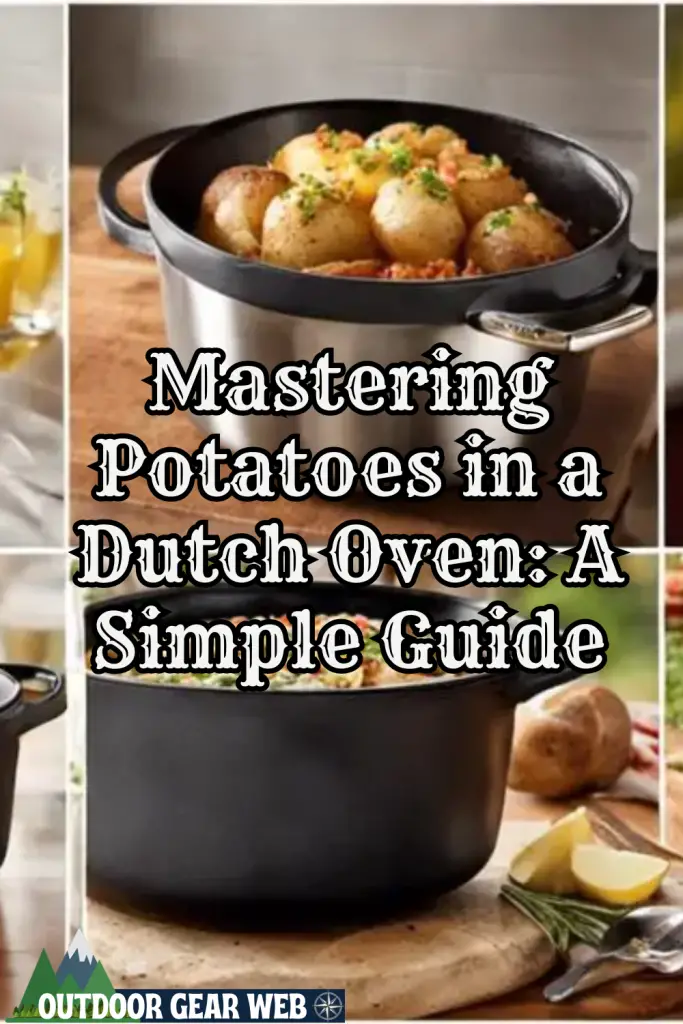
Welcome to the captivating world of Dutch oven cooking, a timeless culinary art that has played a significant role throughout history and provides several benefits, even in today’s modern kitchen. We will delve into the unique features of the Dutch oven, such as its capacity for even heat distribution, and how to control this crucial aspect for excellent results. We will also explore the humble yet versatile potato, unveiling the various preparation techniques that can transform this simple ingredient into a variety of delectable meals when cooked in a Dutch oven. From washing and peeling to slicing or dicing, every step matters and impacts the overall dish. So let’s dive into mastering potatoes in a Dutch Oven.
Looking for more camping recipes? Check out all of our great options now.
Understanding Dutch Oven Cooking
An Introduction to Dutch Oven Cooking
Originally used in the 17th century, Dutch oven cooking is a culinary practice that has persisted due to its simplicity and versatility. Dutch ovens are heavy cooking pots made of cast iron or thick-walled aluminum and come equipped with a tight-fitting lid. This design allows for even heating that penetrates food more fully than conventional pots. The addition of a lid also allows it to trap steam, contributing to the moisture content of the food. Dutch ovens are perfect for braising, making stews, baking bread, and even frying.
Distinctive Features of the Dutch Oven
Dutch ovens have a few key distinctive features that contribute to their cooking prowess. Firstly, their heavy construction allows them to retain heat incredibly well. This makes them perfect for long, slow cooking processes like braising or stewing. Secondly, their ability to hold heat means they can be used as an oven in unique situations like campfire cooking. Most modern Dutch ovens also come pre-seasoned, which means they develop a non-stick surface with continued use, improving their versatility and ease of cleaning.
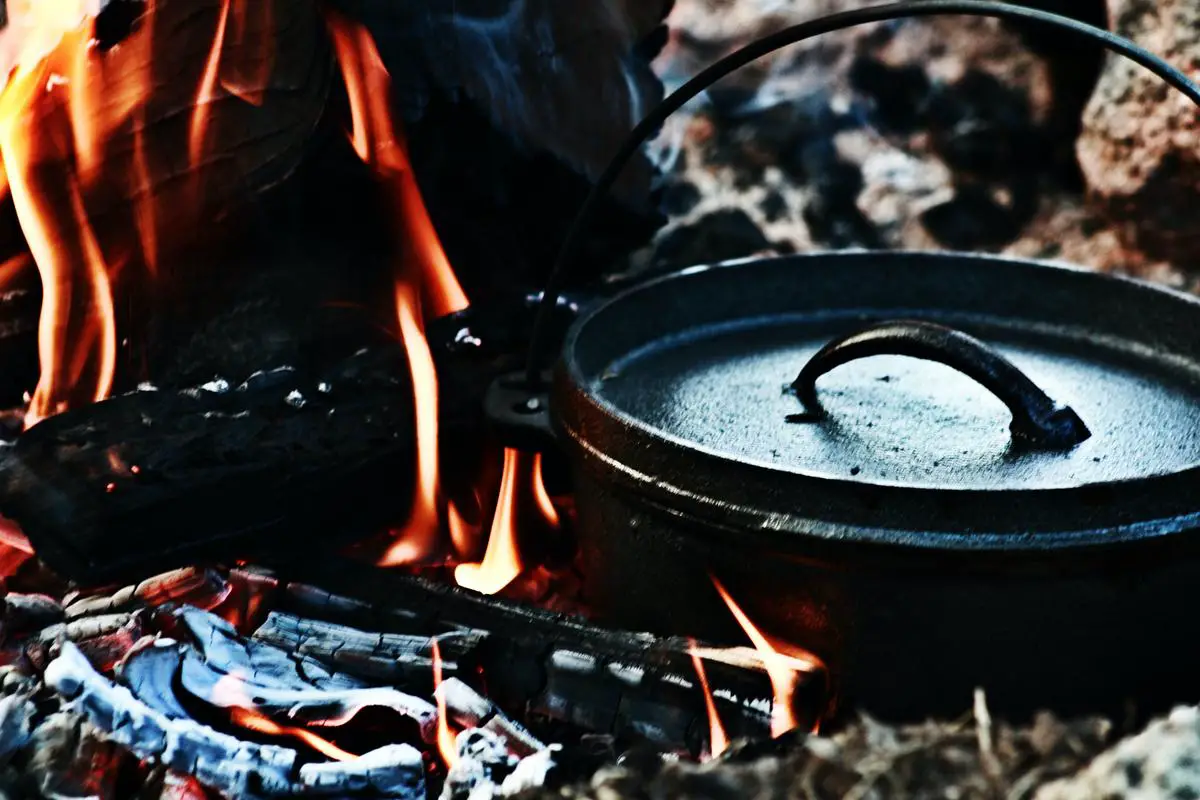
Benefits of Cooking with a Dutch Oven
Apart from versatility and heat retention, there are other benefits associated with Dutch oven cooking. The high sides and depth of the pot allow for layering of food, making it perfect for one-pot meals. Furthermore, Dutch ovens transition seamlessly from stovetop to oven, and their charming rustic look makes them suitable for serving directly at the dinner table.
Moreover, the iron material of many Dutch ovens can leach small amounts of beneficial iron into food, contributing to our dietary iron intake, which is particularly beneficial for individuals with certain dietary restrictions or iron deficiencies.
Controlling Heat Distribution in a Dutch Oven
Understanding and controlling the heat distribution in a Dutch oven is crucial for successful cooking. For recipes that require even heat, like stews or casseroles, make sure that your heat source surrounds the Dutch oven evenly – whether that’s hot coals in a campfire or heat elements in an oven.
On the stove, heat the pot slowly and thoroughly before adding food, to ensure even heat distribution. Always preheat your Dutch oven before adding food. If the recipe requires a temperature change midway, reduce heat gradually. Avoid sudden temperature changes, as they can affect the cooking process and potentially damage the Dutch oven. Paying close attention to and adjusting heat as necessary can make all the difference in your Dutch oven cooking endeavors.
Before you get going with your Potatoes in a Dutch oven grab some of these accessories!
Potato Preparation Techniques
Preparing Potatoes for Dutch Oven Cooking
When your dish of choice is something as tasteful as potatoes cooked in a Dutch oven, you must first strategize about potato preparation. An essential step for any potato dish, the purpose of preparation involves maximizing flavor while maintaining an agreeable texture. Potato preparation typically involves three steps: washing, peeling, and cutting. Each step significantly influences the resulting taste and texture of your potato-centric dish.
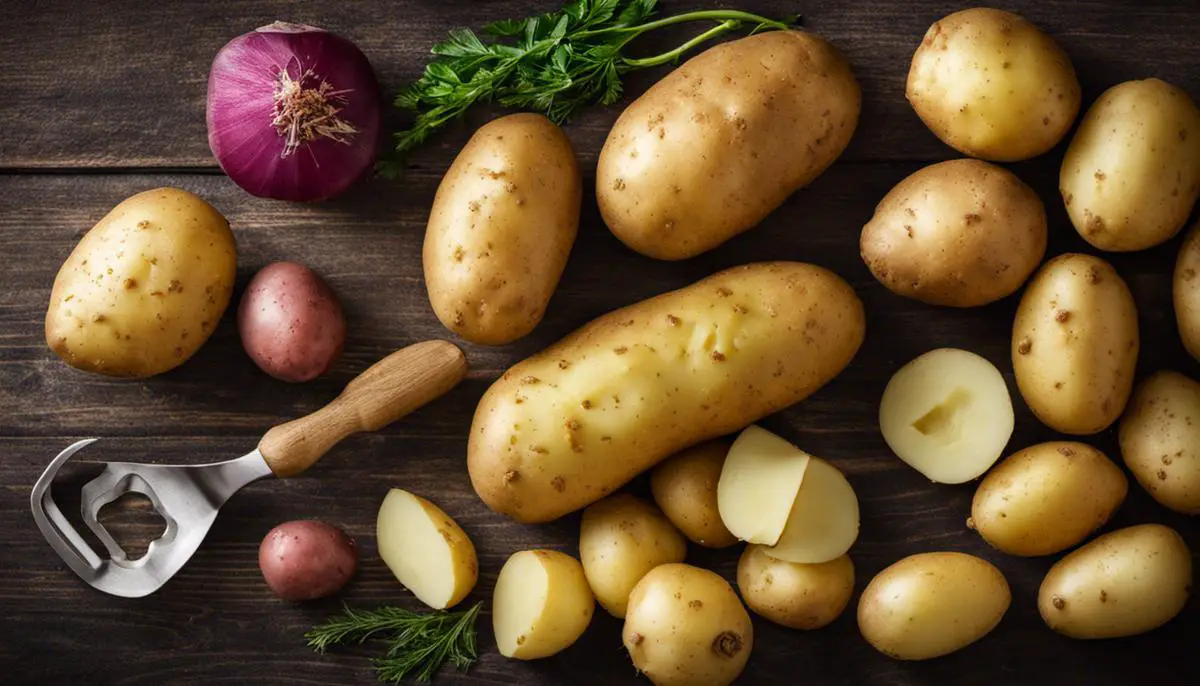
Washing Potatoes
A proper wash serves to remove any remaining soil still clinging to the potato’s skin. Use a vegetable brush to thoroughly clean the surface of the potato under running water. Be cautious not to break the skin in the process, as it serves as protection against bacteria. Washing potatoes should be done right before cooking to prevent damp potatoes from spoiling. Clean potatoes yield a better taste and reduce health risks from potential bacteria or sand.
Peeling Potatoes
Peeling removes the skin, which houses a significant portion of the potato’s nutrients. However, it’s a step often necessary when wanting smoother dishes like mashed potatoes. Peel the skin off using a standard vegetable peeler and make sure to remove any eyes or sprouts, which can influence taste negatively. After peeling, keep the potatoes immersed in water to prevent discoloration (oxidation). The peeling decision often depends on the desired dish, as rustic ones usually keep the skin for added texture and nutrients.
Slicing or Dicing Potatoes
The way you cut your potatoes impacts your dish’s final presentation and the potatoes’ cooking time. Uniformity is crucial while slicing or dicing, ensuring even cooking. Use a sharp knife to cut the potatoes into the desired shapes depending on your dish. If you’re planning to bake potatoes, cutting them into wedges or slices might be best, while diced potatoes work well for stews or hash. The size and thickness of your cuts will determine how long your potatoes need to be cooked.

The Impact of Each Step
Every step in the potato preparation process plays a significant role in the resulting dish. Washing ensures cleanliness and reduces potential health risks while peeling can alter the dish’s texture and flavor. Finally, how you slice or dice your potatoes can influence how well they cook in your Dutch oven. Remember, potatoes are like tiny sponges and absorb flavors well. So, taking the time to prepare them properly will result in a tastier, better-textured dish.
Understanding each step’s importance will significantly enhance your potatoes’ final result, no matter the recipe. Remember, each process component caters to different elements in the potatoes, whether it is flavor profile, texture, or aesthetic appeal. So, treat your potatoes with care and they’ll reward you with a delicious dish.
We love to make these Dutch Oven Potato Cepelinias. Give them a shot.
Dutch Oven Potato Recipes
Understanding Ingredients for Cooking Potatoes in a Dutch Oven
The primary ingredient in any potato Dutch oven recipe is, of course, the potato. However, the variety of potatoes you select can greatly influence the flavor and texture of your dish. Russet potatoes, for instance, are ideal for baking and roasting due to their high starch content, while Red or Yukon Gold potatoes are better suited for boiling and mashing due to their waxier texture.
Additional ingredients will vary based on the recipe. Classics like Dutch oven scalloped potatoes may include heavy cream, garlic, and cheese, while a Dutch oven potato soup might require chicken broth, celery, and onions. Be sure to review the ingredient list carefully for any recipe to identify potential allergens or dietary restrictions.
Steps in Cooking Potatoes in a Dutch Oven
A typical process of making Dutch oven potatoes involves washing and chopping the potatoes, preparing any additional ingredients, assembling everything in the Dutch oven, and then properly setting the temperature and cooking time. Remember that the thickness of the Dutch oven might prolong the cooking time compared with standard ovenware. Always cut your potatoes into even pieces to ensure they cook uniformly.
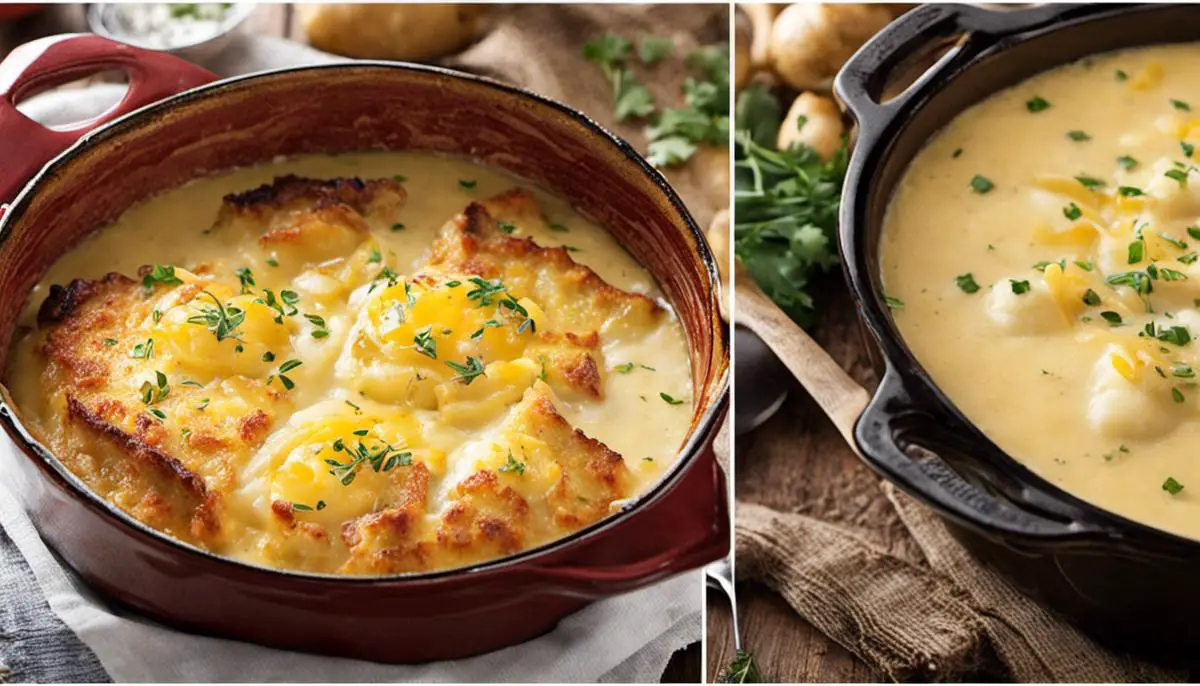
Depending on the recipe, you may need to preheat the Dutch oven before adding your ingredients. For roasted Dutch oven potatoes, for example, many recipes call for the oven to be heated with a bit of oil or butter before adding the potatoes, which helps ensure a crispy, golden crust.
Timing for Dutch Oven Potato Recipes
The cooking time for Dutch oven potato dishes greatly depends on the size of your potato pieces and the actual recipe. Small, bite-sized chunks or thin slices of potato may be done in as little as 30 minutes, while whole baked potatoes could require up to an hour.
Modifying Dutch Oven Potato Recipes
One of the joys of cooking is that you can adjust recipes to suit your individual taste buds. For example, if you prefer spicy food, you might add chili flakes or cayenne pepper to your Dutch oven potatoes. If you’re more fan of herbs, consider adding rosemary, thyme, or dill. Remember, recipes are guides and you should feel free to experiment with different flavors and ingredients to find what works best for you.
Practicing Dutch Oven Potato Recipes
The more you practice cooking potatoes in a Dutch oven, the more comfortable you’ll become with the process. Try making a few simple recipes to start, like Dutch oven-roasted potatoes or a basic potato soup. Once you’ve mastered these, move on to more complex dishes, such as Dutch oven-scalloped potatoes or potato casseroles.
As you cook, make notes of what works and what doesn’t, and don’t be afraid to try new things. Your taste buds will thank you!
Cook your Dutch oven potatoes at one of these spooky campgrounds this fall.
Final Thoughts on Mastering Potatoes in a Dutch Oven
Through the exploration of centuries-old Dutch oven cooking techniques and diverse potato recipes, we have seen that this timeless piece of cookware remains a beloved choice in our kitchens today. Interacting with each ingredient in a distinct manner, the Dutch oven brings out the best in the potatoes, rendering dishes that comfort, satisfy, and nourish. By understanding and following the recipes, timings, and the flexibility to tailor them to individual preferences, each of us can endeavor to perfect this wonderful cooking craft and create our version of Dutch oven potato dishes, taking delight in every flavorful bite.









